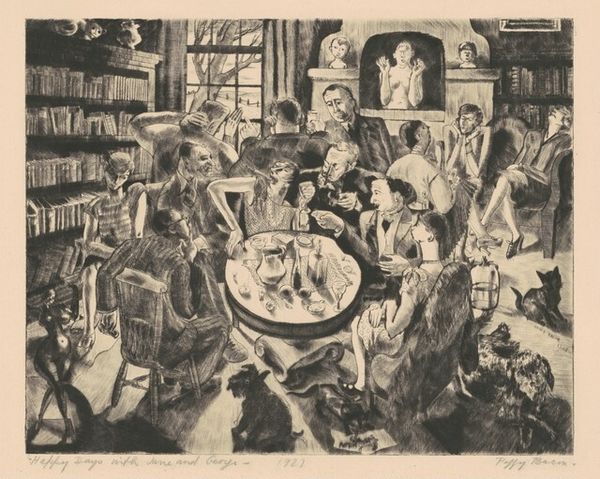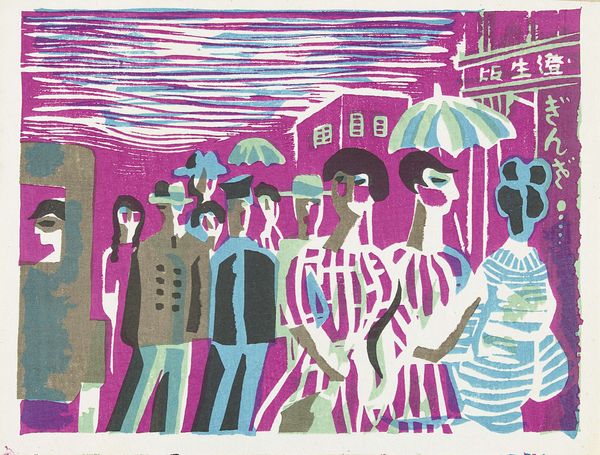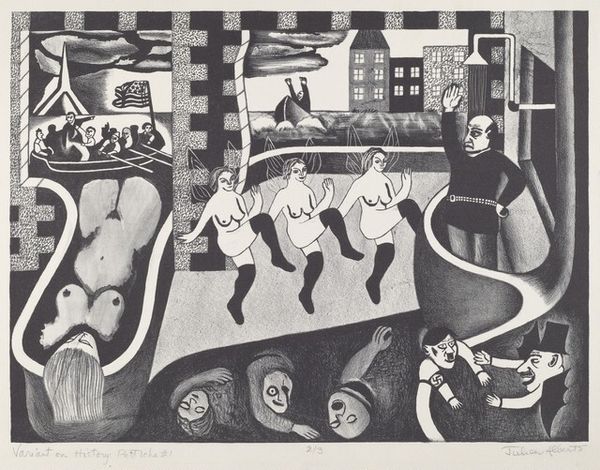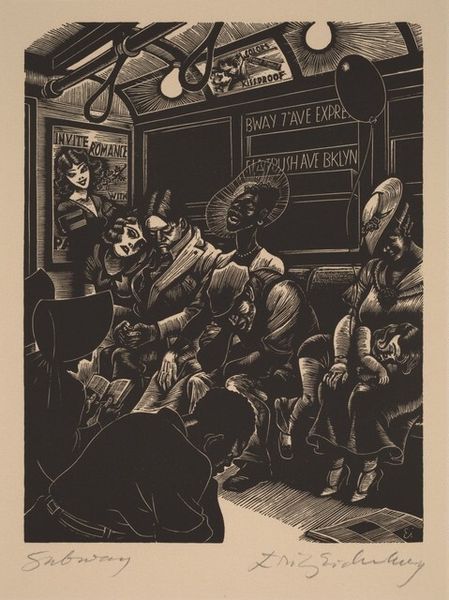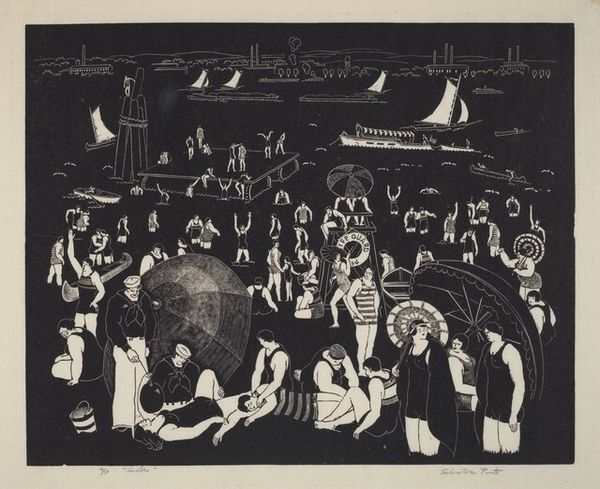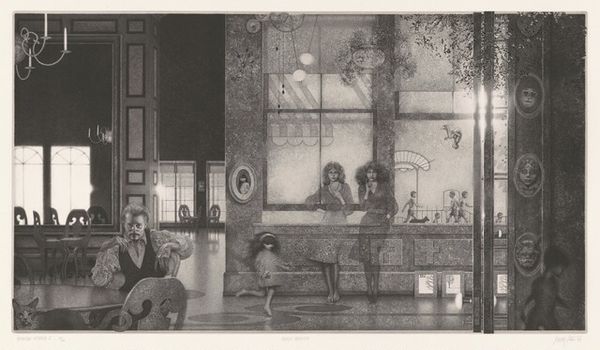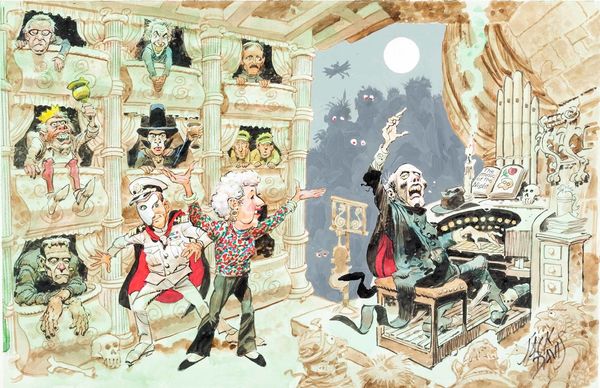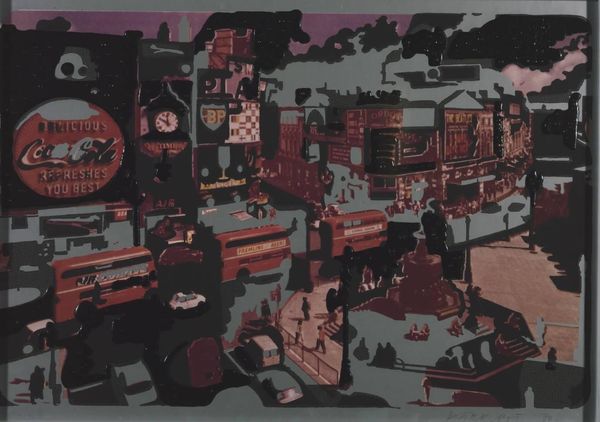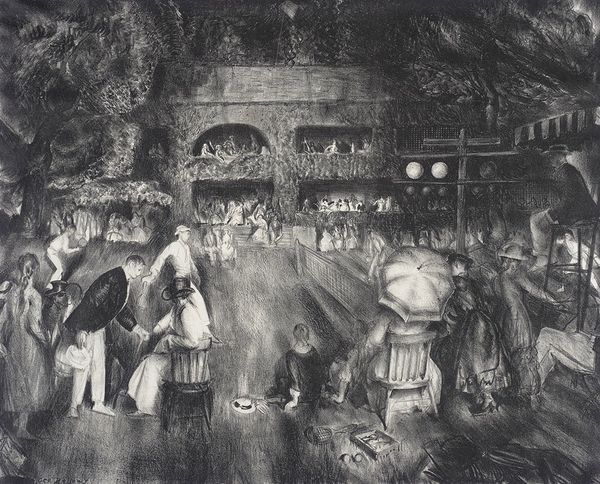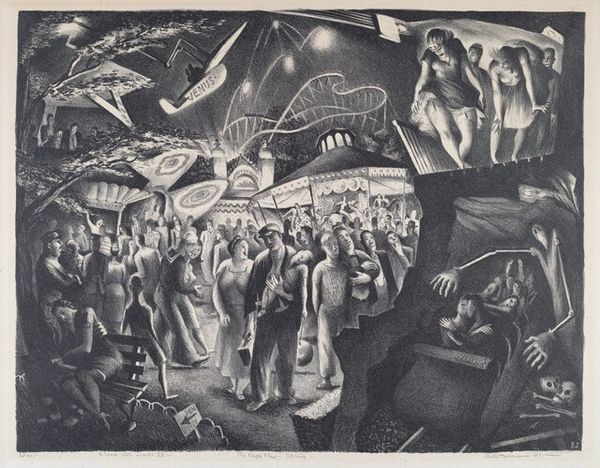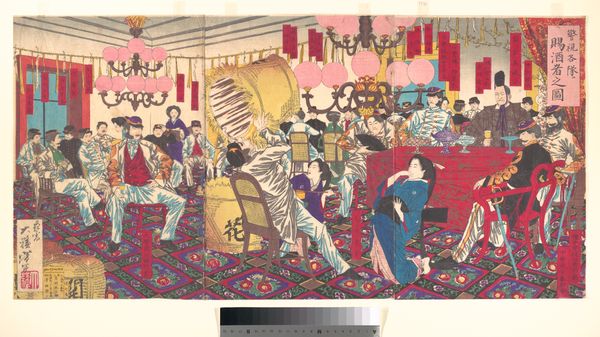
Dürer at 23, in Venice, in Love, His Bags are Stolen 1977
0:00
0:00
Dimensions: plate: 55 x 70 cm (21 5/8 x 27 9/16 in.) sheet: 62.5 x 90.7 cm (24 5/8 x 35 11/16 in.)
Copyright: National Gallery of Art: CC0 1.0
Editor: Here we have Warrington Colescott’s “Dürer at 23, in Venice, in Love, His Bags are Stolen” from 1977. It looks like a mixed-media print, maybe an etching? It's got such a chaotic energy to it. What jumps out to you about this piece? Curator: For me, the intriguing element is Colescott's process. It’s an etching, and we can consider the labor involved. He layers caricature and Venetian imagery and throws in Dürer. Colescott isn’t just depicting a scene; he’s crafting a commentary through his chosen materials. The traditional etching process combined with a decidedly modern, almost cartoonish style makes a statement about artistic production itself. How does that blend of old and new strike you? Editor: I see what you mean! The classical etching technique paired with such a modern, almost humorous narrative is definitely thought-provoking. It kind of undermines the perceived hierarchy between craft and fine art, doesn't it? Like, he's using this laborious process for something so… cheeky? Curator: Exactly! And think about the "stolen bags." It's about theft of not just physical goods, but also the appropriation of artistic styles and historical narratives. What commentary might Colescott be making about the commodification of art and experience within a tourist environment? Editor: That's a great point! Venice, Dürer... both very marketable concepts. Colescott seems to be hinting at the sometimes absurd ways we consume art and culture, like souvenirs ready to be snatched up! It all comes back to how it’s made, right? Curator: Precisely! By calling attention to the production – both the etching process itself and the “products” of culture – Colescott asks us to examine our relationship with art and its value. Editor: This has really made me think about art's relationship to commerce, thanks! Curator: Likewise, thinking about materiality definitely reframes how we see this chaotic composition!
Comments
No comments
Be the first to comment and join the conversation on the ultimate creative platform.
